These dents mysteriously appeared on our living room floor and, needless to say, are one of those things that weren’t quite planned. Repairing the floor has been on our very, very long To-Do list for a while. But now it’s done!
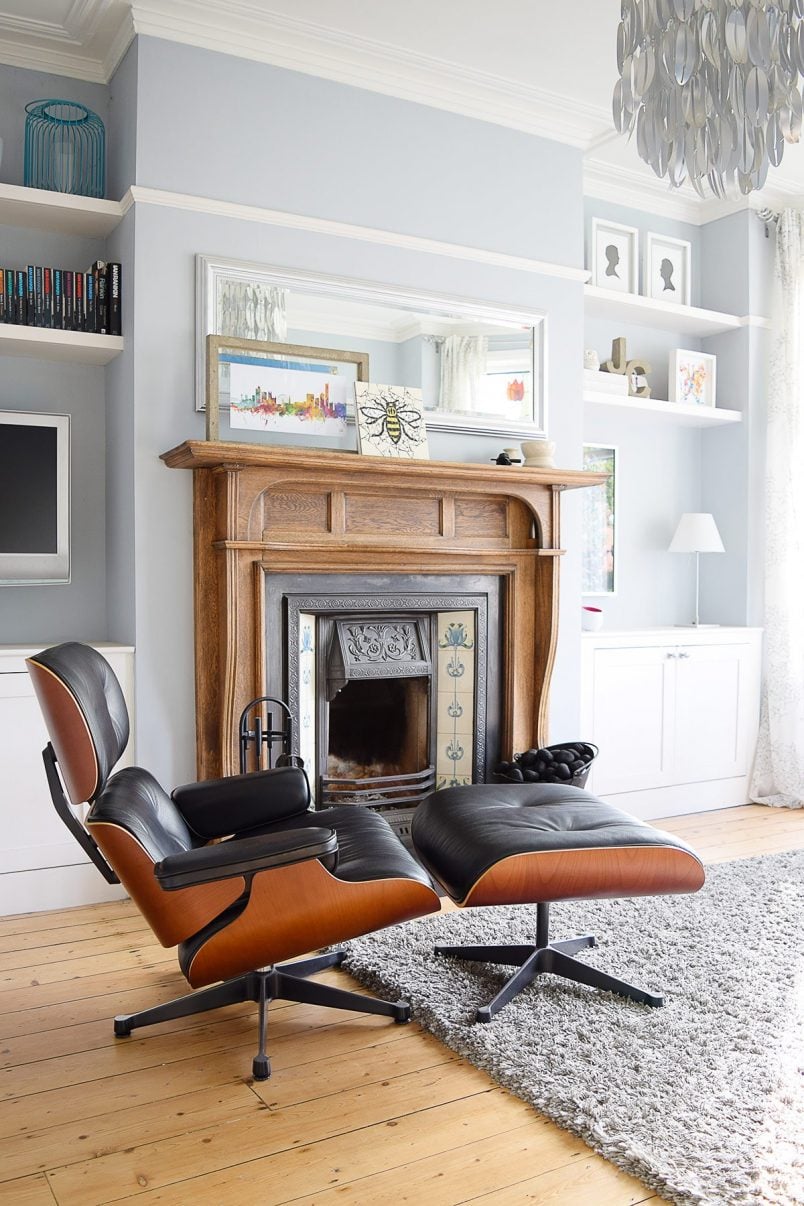
All in all, it took less than 30 minutes of work to repair the floor and I’m really surprised how easy and effective the method we used was. You can even use the same method to repair other wooden surfaces like furniture, moulding, doors, etc.
Here’s our Step by Step guide on how to remove dents in wood (floors or furniture)
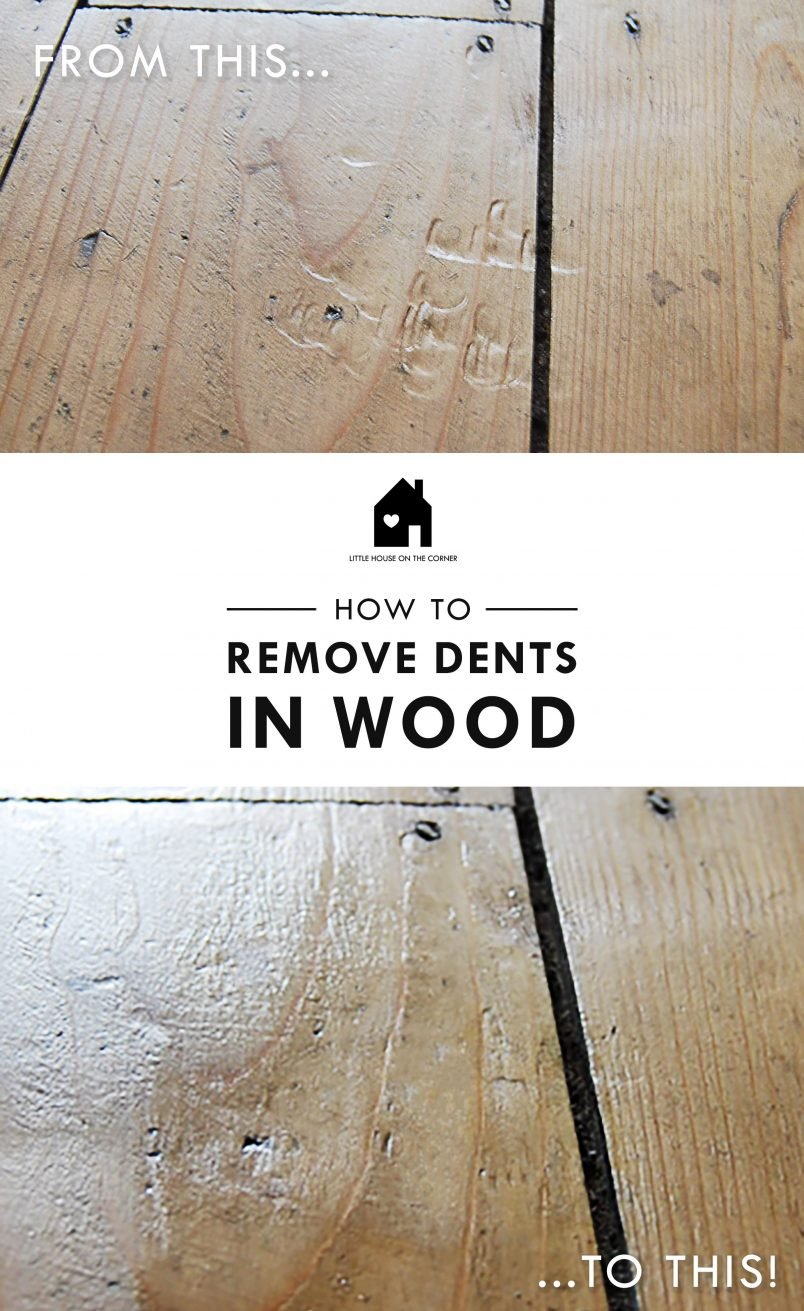
This is what you’ll need to remove dents in wood:
- Sandpaper (we used 120 grit for the floor, but would use something finer on furniture)
- Damp tea towel
- Iron
- Varnish, Paint or whatever other finish the item you are working on has
1. Prepare Your Floors
This is the floor before starting work. I have to admit that I was slightly sceptical about the method, but it worked so well! We can’t recommend it highly enough!
You can see that there are clear marks that look like they may have been caused by a stiletto heel.
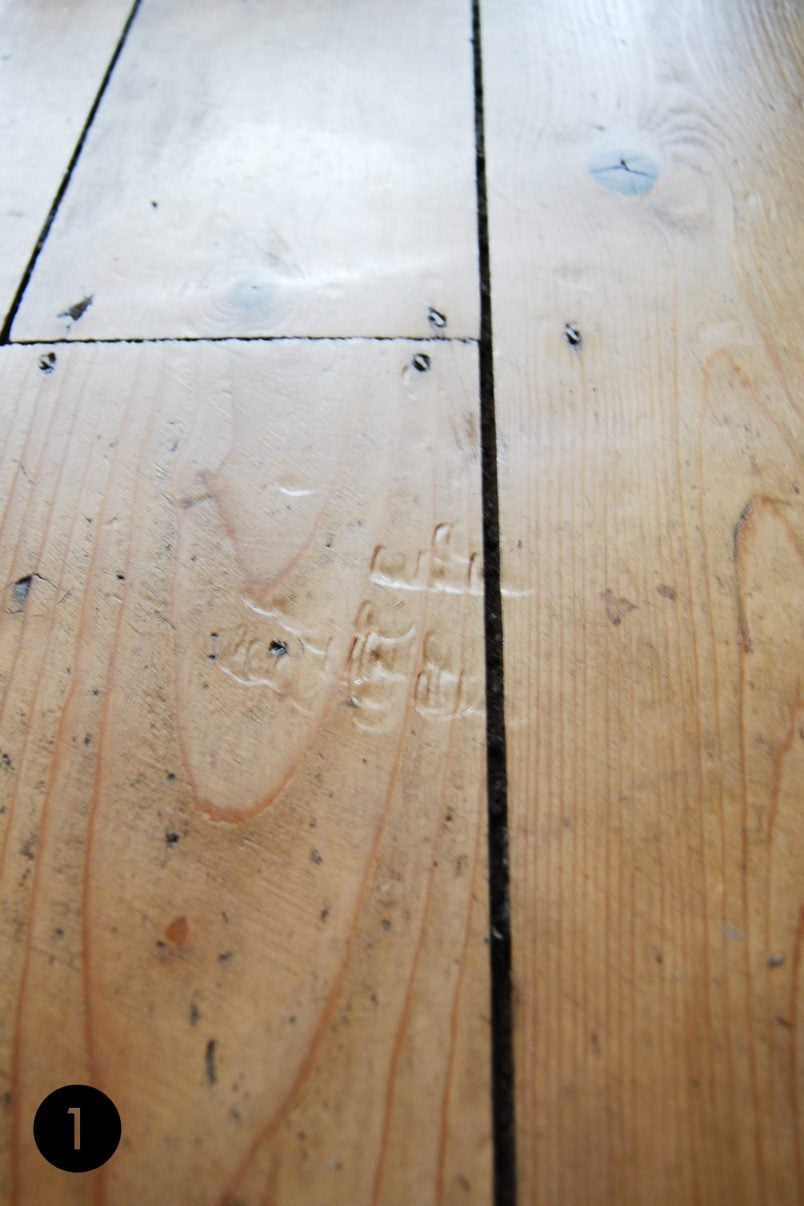
2. Sand The Floor
In order to allow the wood to return to its original shape, you will have to remove any layers of paint or varnish and then slightly roughen up the surface with some fine sandpaper.
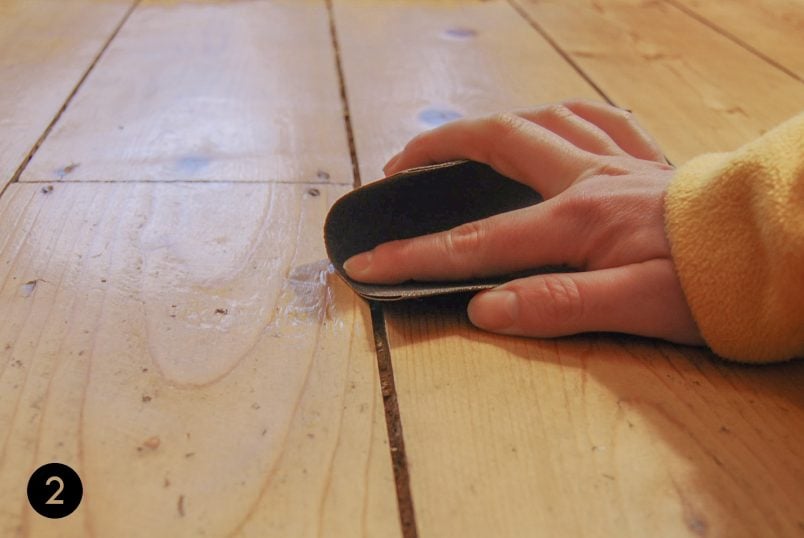
3. Iron The Floor To Remove The Dents
Turn on the iron and wait until it has warmed up completely meanwhile soak a tea towel in some water until it is wet, but not dripping. Then place the towel onto the area with the dents. Make sure the towel is flat and has no folds in it.
With the hot iron, carefully rub over the area of the towel under which the dent you want to remove is. Only do this for a second or two at a time and make sure that the towel is always damp so that enough steam can develop to penetrate the wood.
Keep checking the area and repeat the process as necessary until the wood grain has risen.
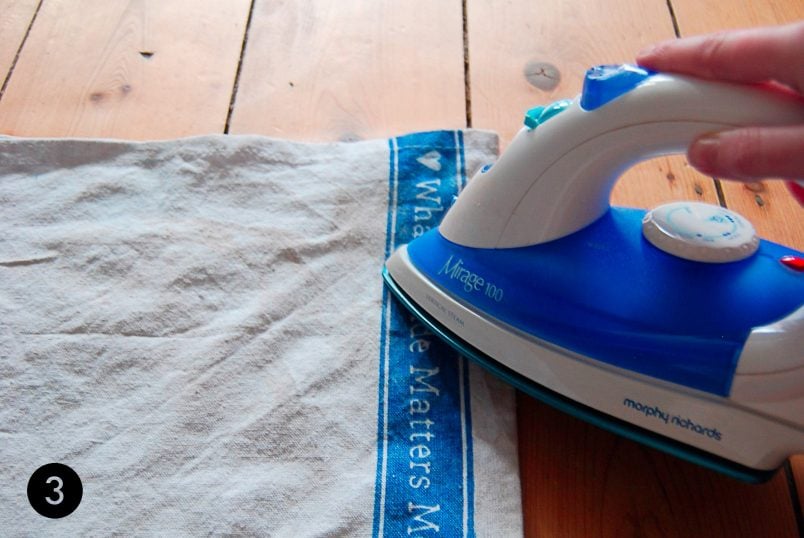
4. Let The Floor Dry
You will now have to let the area you’ve been working on dry thoroughly. You can see that the darker area is wet where the steam has penetrated the wood. The lighter area hasn’t been sanded and therefore the steam can’t penetrate the varnish.
When it’s completely dry, give it another quick sand (always in direction of the grain) with some fine sandpaper.
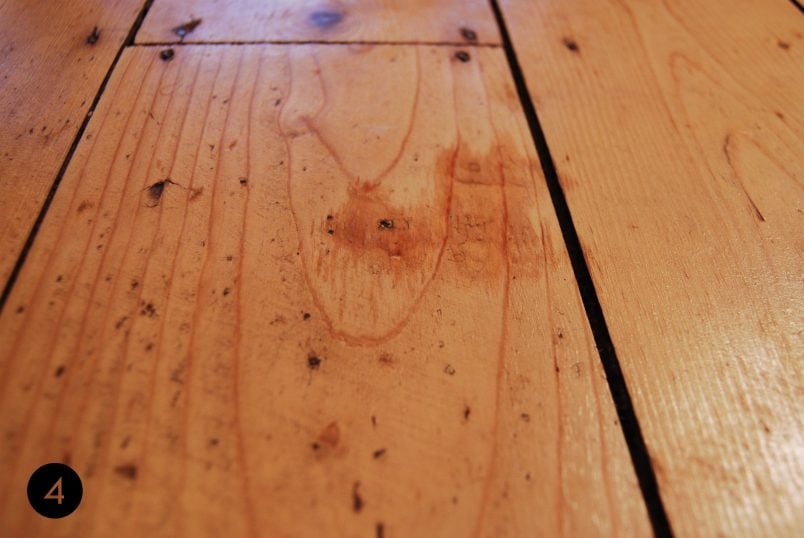
5. Reseal The Floor
The last step is to reseal the surface. In our case, the floor was covered in clear varnish which now just needs touching up.
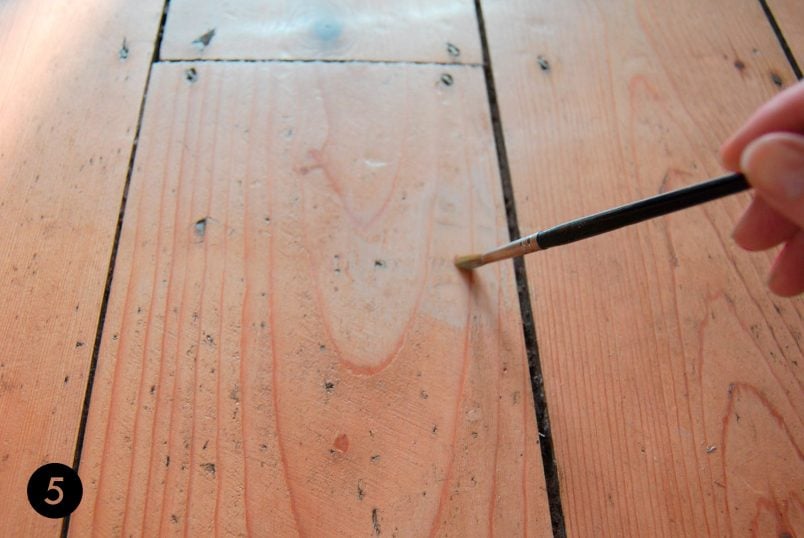
And here’s the result:
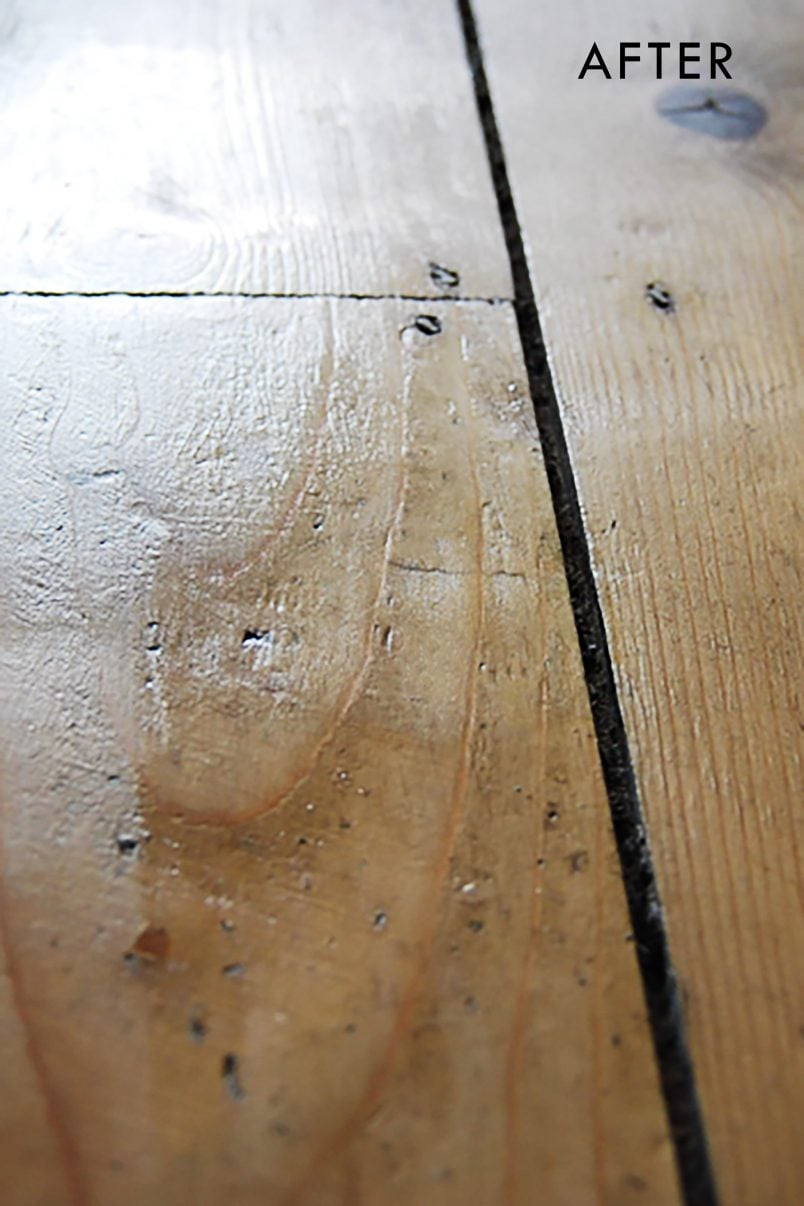
You’d hardly know that there was ever a dint there! I can’t emphasize enough how easy and effective this method is. It will only work on normal wood surfaces and not on compressed wood or varnished surfaces.
Do you have any damaged furniture or floorboards? If you try this method, let us know how you get on!

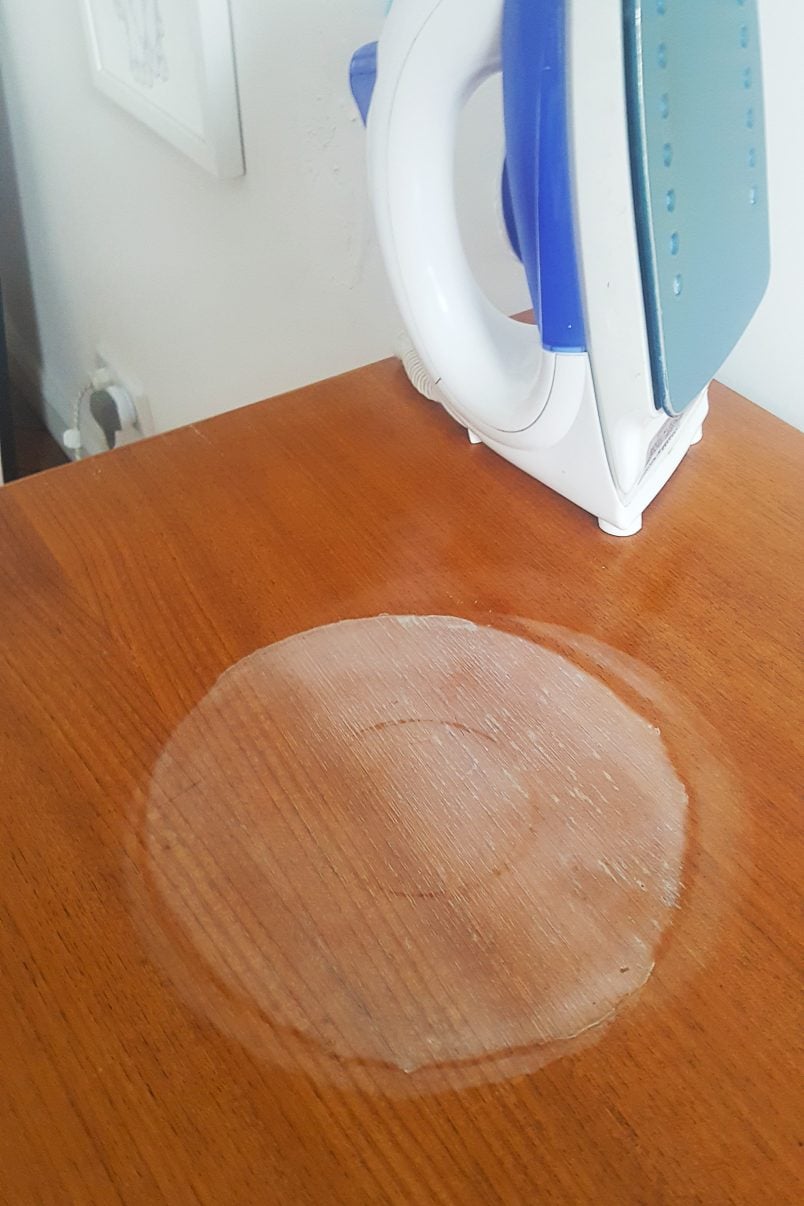
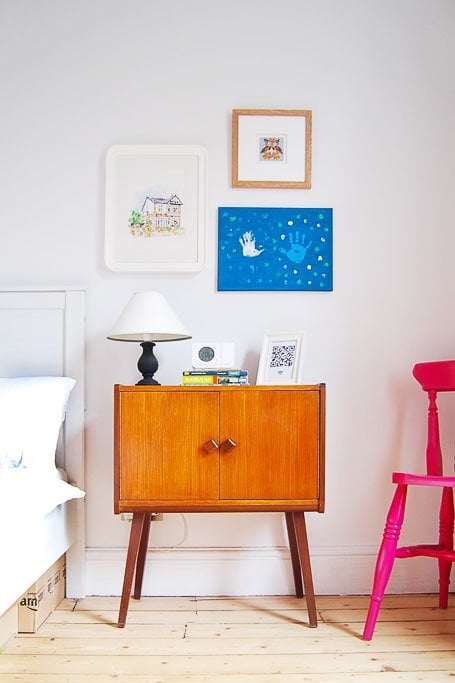
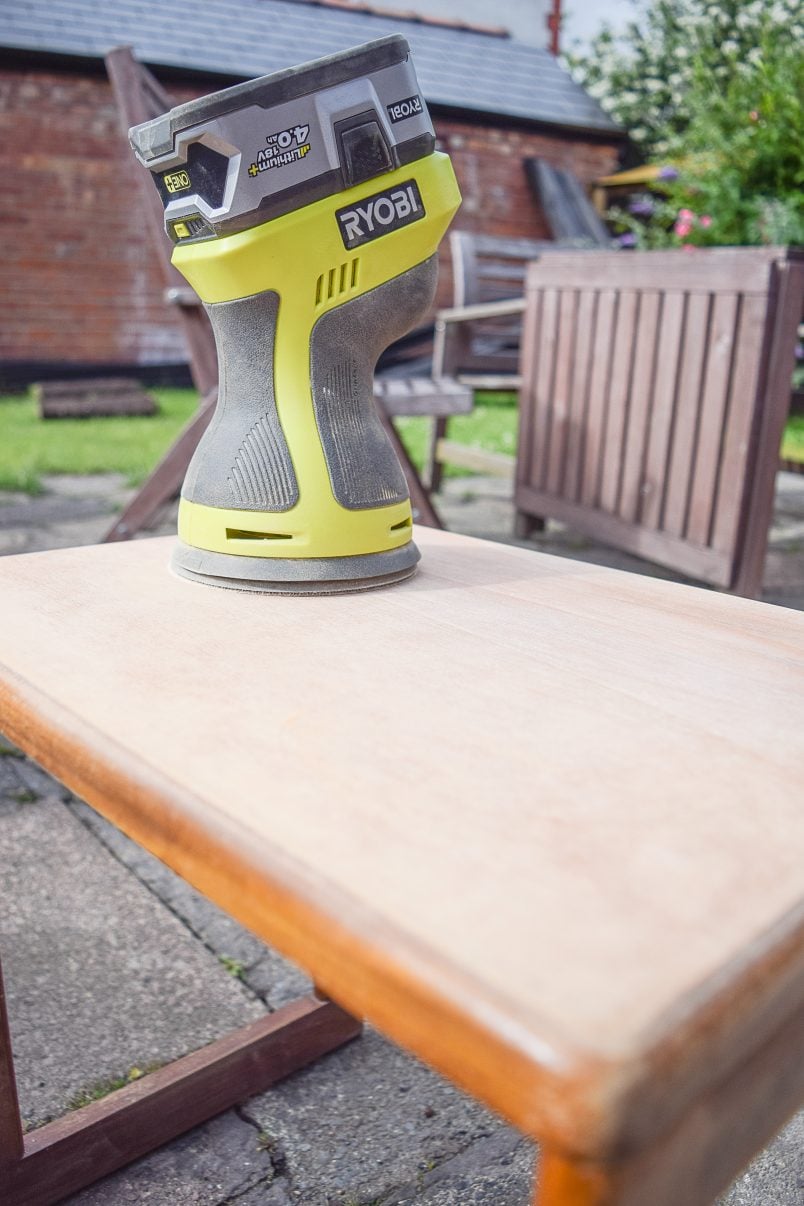
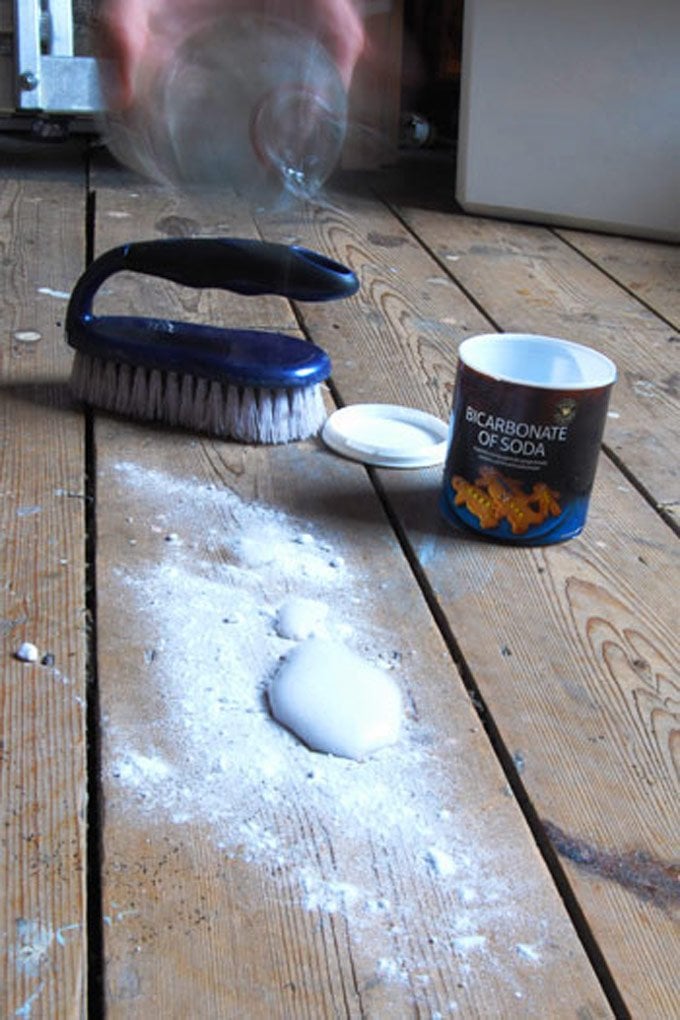

Lilly says
Our swivel chair has put dents onto the floorboards, probably about 1m2 area is pushed down and bumpy and now looking to find a way to fix it. Any suggestions?
Christine says
In general, I think that the method we shared here could work, it’s just a really large area to cover. Obviously, the best way to completely remove any dents would be to sand the whole floor and start again from scratch. Unless the dents really bother you though, I’d be tempted to leave them. Ultimately, it’s part of the character of your floor and removing them would be a lot of work.
Cx
Pavel Jakubů says
I want to thank you very much for this tip. It helped me to repaire a small wooden stool. I am sorry for my English – I am from the Czech Republic and I have to note that it works here as well :-)
Christine says
So glad it worked for you, Pavel! Thanks for the feedback!
Cx
PS. Your English is great – nothing to worry about!
Vanessa says
I have never seen this done before, so thanks! Let’s hope I remember it when I need to fix a dent in the future.
Christine says
It’s a trick I learned at a joinery, Vanessa. I love how sometimes little tricks can make a big difference!
Cx
Mandy ryan says
hi, if I have large gaps inbetween my floorboards, what do you suggest using as a filler? Many thanks, Mandy
Christine says
That’s not an easy question to answer Mandy! We had large gaps between our floorboards in our master bedroom, so we took up all floorboards and pushed them closer together (make sure they don’t touch though). Alternatively you can fill the gaps with a mixture of sawdust and woodglue, but this isn’t an overly durable solution. There are also special products to seal the gaps – they’re essentially V-shaped strips of plastic that you squash into the joint. (something like this: . It really all depends on how big the gap is, but I’d say the two real options are move your floorboards closer together or live with the gaps.
Cx
Countingstarsbackwards says
An old trick for fixing dents in frame restoration would work in a similar way, especially if you don’t want to deal with sanding/fixing the finish. Take a sewing pin and pepper the surface of the dent with tiny holes. Take a small bit of toilet tissue, wet it, and ball it into the dent. Leave it until it’s dry and the dent should be fixed when you take it off.
Christine says
That’s a great tip! If we ever have any more dents to repair we’ll definitely give it a try – thanks for sharing.
Cx
Izzy says
Thanks so much for this tip!!! I have a stained and sealed floor, so I couldn’t do the sanding back step, but this has worked a treat! :)
Christine says
I’m so happy to hear that it worked for you, Izzy! Thank you so much for the feedback – we love hearing when things have worked out!
Cx
Jesse says
Great to see this in action! I’ve read about this before, but I somehow didn’t believe it would really work. We have dents all over our floors, but I’m determined to tackle them now.
Christine says
Thanks Jesse! I still can’t get over how easy and effective it was. You should definitely give it a try, it’s so worth it!
Magali@TheLittleWhiteHouse says
Wow! Amazing! It’s like there never was any problem on that part of the wood!
Christine says
I know! I could hardly believe how well it worked. I almost wish I had some dents in my furniture to repair!
Cx